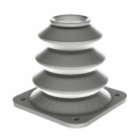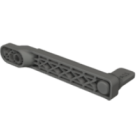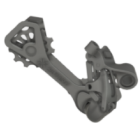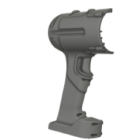How to fill gaps in 3D prints
No matter how well-calibrated your machine is, imperfections can happen — especially in complex or long-duration prints. Small cracks, layer separations, and under-extruded zones are common issues that can compromise a part’s functionality or appearance. Understanding how to fill gaps in 3D prints effectively is a core skill in post-processing, whether you’re salvaging a prototype or perfecting a production-ready piece.
Common causes of gaps in 3D prints
Before filling any defects, it helps to understand what causes them. Gaps may result from several factors: inconsistent extrusion, poor first-layer adhesion, insufficient wall thickness, low infill, or thermal warping. Hollow sections can also contribute — especially if the model wasn’t designed with structural continuity in mind.
In many cases, fixing these issues in the print file or settings is ideal, but when a part is already printed and post-processing is the only option, physical repair becomes the solution.
Surface imperfections vs structural voids
Not all gaps are the same. Surface flaws — such as minor holes or visible seams — usually require only a light cosmetic fix. These can be smoothed or filled to restore appearance and prepare for painting or coating. In contrast, structural gaps — such as large voids in hollow 3D prints — require reinforcement, either by backfilling or reinforcing with additional material.
Knowing the difference determines which filler to use, how much material to apply, and whether additional sanding, priming, or coating will be needed afterward.
Techniques for repairing gaps in 3D prints
Depending on the material and size of the defect, several repair strategies are viable:
- for small gaps or seams, use a fine 3D printing filler putty, such as spot glaze or model filler. These air-dry quickly and can be sanded to a smooth surface before priming;
- for deeper holes or cracks, two-part epoxy or resin-based compounds provide a more durable repair; these bond well to most 3D printing plastics and allow you to rebuild missing geometry with precision;
- for filling internal hollows — particularly in large-format or decorative prints — lightweight expanding foam, plaster, or even resin-casting material can be poured in through a sealed opening; this adds rigidity and eliminates the empty space without excessive weight;
- FDM-specific workaround — reprinting a matching geometry fragment and welding it in with a soldering iron or chemical adhesive (like acetone for ABS) can patch structural defects.
Whichever method you choose, surface preparation is key. Sanding or roughening the area before applying filler helps with mechanical adhesion and reduces the risk of future cracking or separation.
Post-fill finishing and surface preparation
Once the gap is filled and cured, the next step is finishing. This typically includes sanding the area flush with surrounding surfaces, applying a primer if painting is intended, and verifying that the fix has not introduced distortion. In high-stress parts, functional testing is also recommended to ensure the repaired area performs as intended.
In artistic or cosmetic applications, proper gap filling followed by smoothing and coating can completely mask the fact that any damage existed at all — a vital step in turning a raw print into a showroom-quality object.
Key takeaways on filling gaps in 3D prints
Knowing how to fill gaps in 3D prints is essential for getting the most out of every print job. Whether you’re correcting minor visual flaws or reinforcing large hollow sections, the right materials and methods can dramatically improve part performance and finish. With a careful approach to prep, filler selection, and final refinement, post-processing becomes a powerful tool not just for repair — but for enhancing the quality of your 3D printed work.
Explore also
- Removing supports from 3D prints
- Sanding 3D prints
- Polish 3D printed
- Sandblasting 3D prints
- Priming 3D prints
- How to paint 3D print
- How to foiling 3D prints
- How to metal plating 3D print
Related categories













